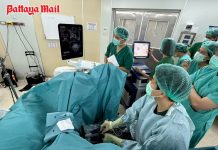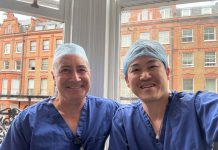The Vikings were quite some race of people. For many people today they are purported to have been traders, but actually they were raiders as well. Their longboats carried more than just randy oarsmen. They carried a remarkable genetic disease producing contracture of the fingers on either hand, and which was later called Dupuytren’s Contracture after Baron Guillaume Dupuytren, who was once Napoleon’s surgeon.
It is a relatively common condition, with a global prevalence of 3-6 percent with the highest percentage being in Scandinavian countries. Countries that have seen a high level of immigration from Northern Europe also see a notably higher rate of occurrence. (This does not cover today’s “boat people” who do not come from Scandinavia!)
Dupuytren’s contracture generally affects the fourth and fifth fingers of the hands and slowly flexes the fingers towards the palm of the hand. Eventually the fingers cannot be straightened out and the sufferer cannot put his hand in his pocket, without catching the finger(s) and it also becomes difficult to shake hands, as the flexed fingers make it difficult to open the hand. The amount of flexure is stated in degrees – up to 60 degrees covers mild to moderate cases, whilst more than 60 degrees is considered severe contracture.
It is considered to be an inherited, genetic disorder. One study examined 832 relatives of 50 people with Dupuytren’s contracture and found that 68 percent of the relatives were affected by the condition. Because of this, it is not a condition that is accepted by insurance companies in many countries. Males outweigh females in the ratio of at least 3:1 and the vast majority of cases are also older than 50 years. The peak incidence is around 60-70 years in women and 50 years in men. If you have this condition, you shared it with Ronald Reagan and Maggie Thatcher, both of whom also developed Alzheimer’s disease, but there’s no connection between it and Dupuytrens.
In common with many people whose forebears came from the UK, I too have the Viking disease, given to me by a Viking longboat man on one of his R&P (rape and pillage) visits to Scotland over one thousand years ago. He did not leave his name. And in keeping with the genetic component, my mother had the condition as well. Thanks Mum!
The usual treatment to correct this condition is surgery, but requires the skill of a specialist in hand surgery. It is also not an easy procedure, as the thickened and contracted tissues (called the aponeurosis) in the palm of the hand have to be dissected out from the nerves and arteries which can be caught up in the thickened tissue. Not only is surgery difficult, but the recurrence is also very high, with recurrence rate figures estimated to be in the range of 20 – 40 percent after five years.
However, there is another surgical technique, known as Needle Aponeurotomy (NA), which does not call for surgical dissection, but is carried out under local anesthesia and involves partially cutting the thickened tissue with the side of a needle. Following this, forced extension of the affected fingers results in the snapping of the aponeurosis, allowing the finger(s) to straighten out once more.
NA procedures are not without problems either, but the incidence of side effects appears to be less than surgery. The drawback is the recurrence rate, which seems to be around 50 percent after a few years, but on the plus side, NA can be repeated. NA is also not a common procedure, with many hand surgeons preferring to continue with the ‘tried and true’ surgical techniques.
Now, back to my own condition. I discussed this with my hospital’s hand surgeon Dr. Suradej and between us agreed to give NA a trial. That was almost four years ago, and my deformity immediately after the NA procedure was then reduced to only 10 degrees. We have been watching it carefully. At this stage there is a slight increase in the deformity, but none of the aching pain I had before. I estimate the deformity is now about 15 degrees.
So, if you have the ‘Viking disease’, it could be worth a consultation.




